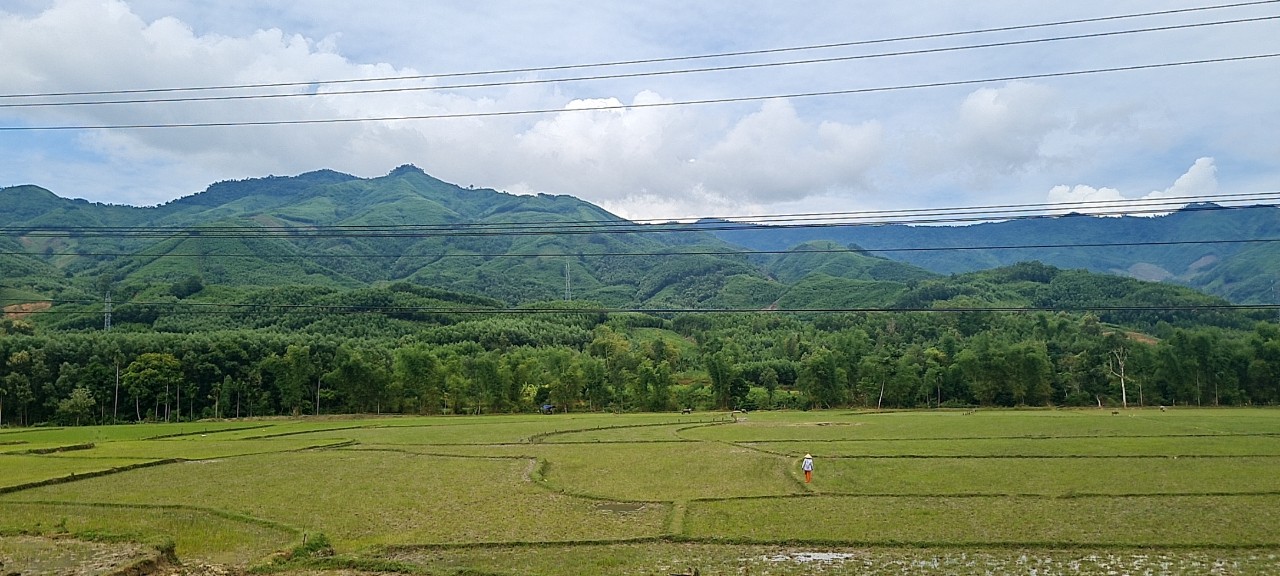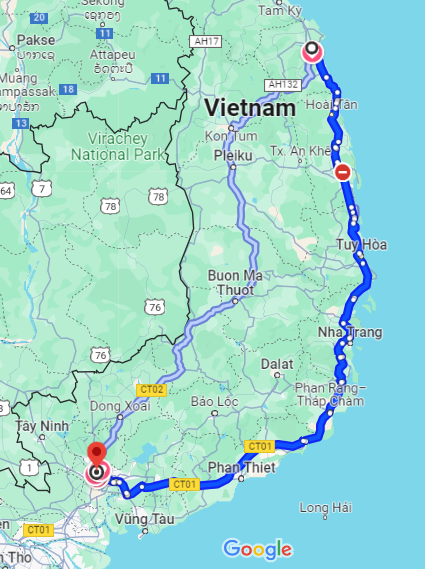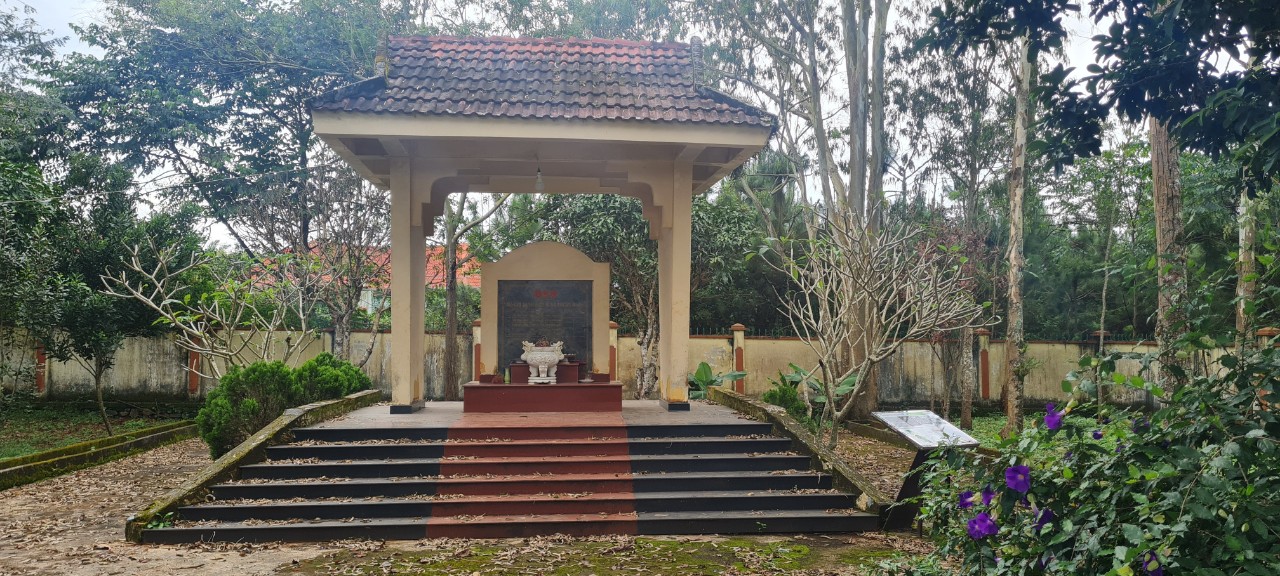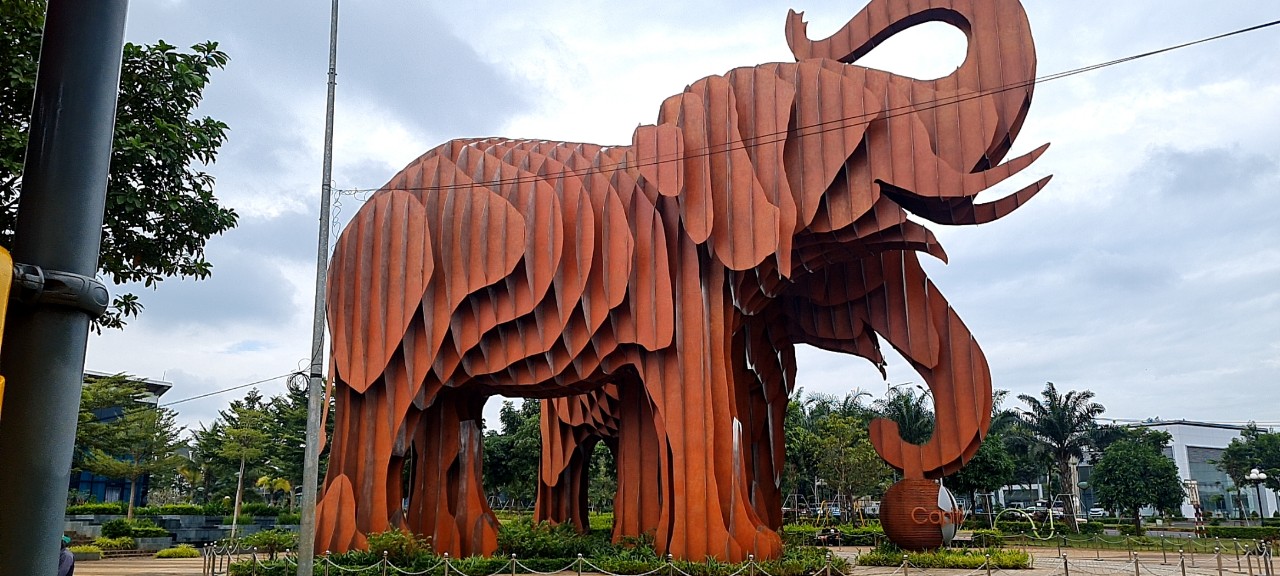Editor's note: Peter Kauffner is from the U.S. and currently lives in Binh Duong Province. In this story, he recalls his four-day trip of driving a motorbike from Quang Ngai Province to Ho Chi Minh City on the Ho Chi Minh Trail. The story was edited by Tuoi Tre News.
Vietnam’s traffic is some of the world's scariest, so successfully driving across the country gives you bragging rights. In fact, crossing Vietnam on a motorbike has become something of a standard adventure of modern tourism, glorified by the BBC show Top Gear in a 2008 special.
For my version of the trip, I started in Quang Ngai, a city with outstanding and undiscovered beaches in central Vietnam. I biked along the Truong Son Road to Ho Chi Minh City in the south, a distance of 713km that took me four days.
|
|
| The highland route is shown on the left while the coastal one is on the right. Photo: Peter Kauffner |
Truong Son Road is another name for the Ho Chi Minh Trail. But this is a bit of a misrepresentation. The legendary wartime supply route is not something that you can drive your motorbike down. It was significantly further inland and ran through the mountains and trackless wilderness near Laos and Cambodia.
I didn’t notice any other foreigners in the course of the trip. A lonely memorial on the plateau is the only concession to war tourism. It is also the only place on the route where I saw any English language signage.
|
|
| A memorial on Truong Son Road. Photo: Peter Kauffner |
Practical advice
Some 86 percent of Vietnamese households own a motorbike. Rush hour traffic in Ho Chi Minh City has to be seen to be believed. The intersections are literally packed. Several times, I have encountered drivers on the wrong side of the street coming straight at me while using a cellphone.
Outside the city, the traffic is less chaotic. But trucks are everywhere and they drive aggressively. The rules regarding trucks are different in Vietnam. The main traffic lanes are for trucks and cars. Motorbikes are expected to use the shoulder or emergency lane. When a truck crosses the median line to pass, oncoming motorbikes need to be out of the way.
There are also advantages to motorcycles. When you reach a toll booth, you take the half-lane on the right and skip the toll.
The traffic is also not quite as dangerous as it looks. Motorcycles typically have a displacement of 125 cubic centimeters, equivalent to 8.3 horsepower. This is grossly underpowered by American standards, so collisions are relatively low speed. My bike was an Attila Victoria 125. An escalating tariff makes anything larger prohibitively expensive. I bought it from another expat, but there are also rental services such as Tigit.
|
|
| The contents of my first aid kit on the road. Photo: Peter Kauffner |
I also recommend a rain poncho. If you worry about your tire deflating, there is a kit for that.
Truong Son is a paved, modern road through the highlands. It goes over mountains and there are bridges to take you over wide valleys. It must have been quite a project to build.
All the same, the road is still missing a few things. For example, many intersections have no signs at all, so you need Google Maps to go anywhere. The signs that do appear are not usually for major cities.
Where to stay and what to eat
Another thing that’s missing is roadside hotels, at least signs that say 'hotel.' Officially designated hotels can be found only in the cities. In the highlands, the next city can be an hour or two away.
Nhà nghỉ (guest house) is a useful word to learn. This is a bareboned version of a hotel, with just a bed and a bathroom. They are everywhere in Vietnam.
The highlands might not have roadside hotels, but they do have cheap and delicious roadside food. I downed quite a bit of pho, or noodle soup, over the course of the trip. It comes in two varieties. There are pho bo, or beef noodle soup, and pho ga, or chicken noodle soup.
The highland route is becoming more accessible every year. It was not an option in 2008. Top Gear used the coastal highway. Navigation is simpler on the coast. If the East Sea is on your left, you are headed south.
Up the mountain
On the first day of the trip, I drove from Quang Ngai to the highland city of Kon Tum on QL24 (National Highway No. 24). This was easily the memorable part of the journey. The road goes up and up, peaking on the border between Quang Ngai and Kon Tum Provinces. The ultraviolet light gave my arms a dark suntan and my nose a sunburn.
A spectacular view of valleys and terraced farms made it all worth it. There were people camped out on the mountain so they could wait out the rain and enjoy the view. Unfortunately, the intense radiation left my pictures with a washed-out look. If you go, bring a UV filter.
There are no gas stations in this mountainous area, and my gauge sank down toward empty. It occurred to me that the next city could be a long way to push a motorbike. The rain came down hard and forced me to stop at a general store. They rescued me with a hand-operated gasoline pump. It seems that I am not the first person to have this problem.
After a few hours of driving, I reached the plateau. The weather cleared up and I made quite an impression on the locals. Two girls drove next to me on their own bike, asked me questions and took pictures, but never slowed down.
In Kon Tum, I looked up the local English club on Facebook. I gave a lecture at Nguyen Tat Thanh High School. Although I had not prepared anything, I did have some old jokes to tell. It was certainly an appreciative audience. Despite these distractions, I still made it to Buon Ma Thuot, the elephant city, on the second day.
Kon Tum to Buon Ma Thuot is 223km. I stopped at the city park, which has statues of elephants.
|
|
| An elephant statue at a park in Buon Ma Thuot. Photo: Peter Kauffner |
From Buon Ma Thuot, I drove until dark and reached Binh Phuoc, a province whose local product is cashew. Do not forget to get some when you are there.
When I arrived at the guest house they told me that there was only one room available and that I would have to depart at 5:00 am the next day because construction workers needed to fix something in it.
I left early and drove to Ho Chi Minh City on empty roads the next morning.
Like us on Facebook or follow us on Twitter to get the latest news about Vietnam!



























